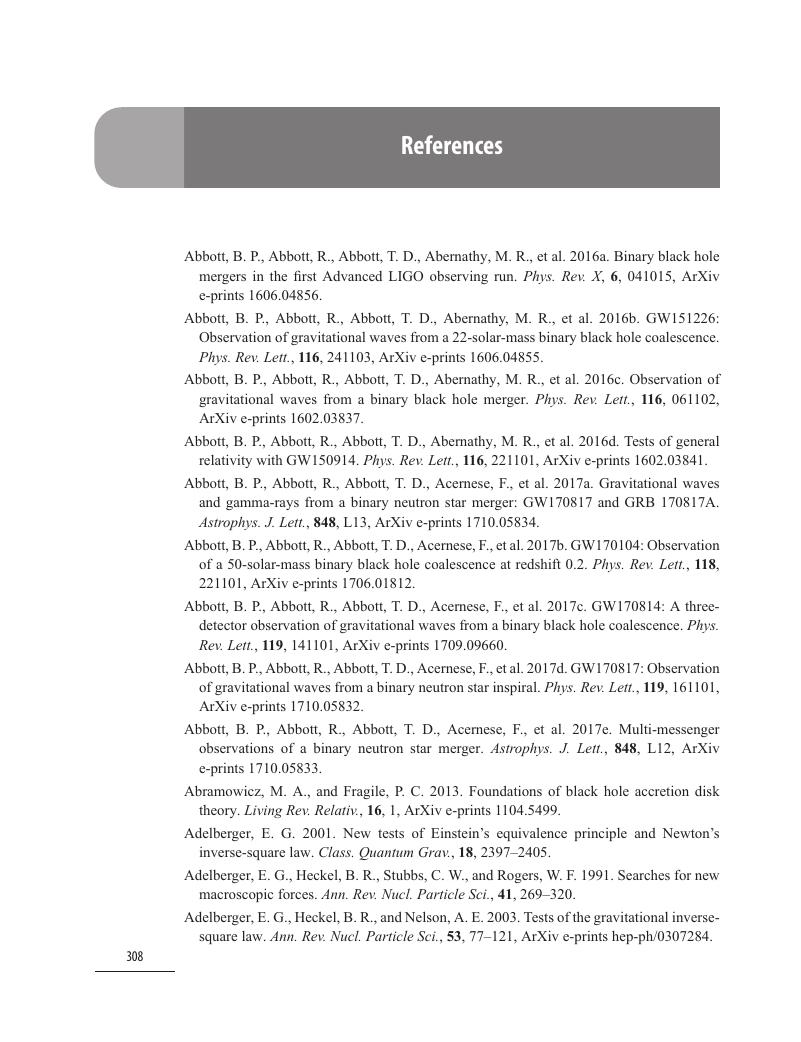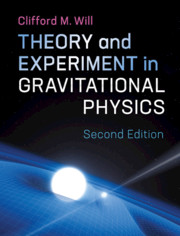Book contents
- Frontmatter
- Dedication
- Contents
- Preface
- Acknowledgments
- 1 Introduction
- 2 The Einstein Equivalence Principle
- 3 Gravitation as a Geometric Phenomenon
- 4 The Parametrized Post-Newtonian Formalism
- 5 Metric Theories of Gravity and Their Post-Newtonian Limits
- 6 Equations of Motion in the PPN Formalism
- 7 The Classical Tests
- 8 Tests of the Strong Equivalence Principle
- 9 Other Tests of Post-Newtonian Gravity
- 10 Structure and Motion of Compact Objects
- 11 Gravitational Radiation
- 12 Strong-Field and Dynamical Tests of Relativistic Gravity
- References
- Index
- References
References
Published online by Cambridge University Press: 07 September 2018
- Frontmatter
- Dedication
- Contents
- Preface
- Acknowledgments
- 1 Introduction
- 2 The Einstein Equivalence Principle
- 3 Gravitation as a Geometric Phenomenon
- 4 The Parametrized Post-Newtonian Formalism
- 5 Metric Theories of Gravity and Their Post-Newtonian Limits
- 6 Equations of Motion in the PPN Formalism
- 7 The Classical Tests
- 8 Tests of the Strong Equivalence Principle
- 9 Other Tests of Post-Newtonian Gravity
- 10 Structure and Motion of Compact Objects
- 11 Gravitational Radiation
- 12 Strong-Field and Dynamical Tests of Relativistic Gravity
- References
- Index
- References
Summary

- Type
- Chapter
- Information
- Theory and Experiment in Gravitational Physics , pp. 308 - 343Publisher: Cambridge University PressPrint publication year: 2018



